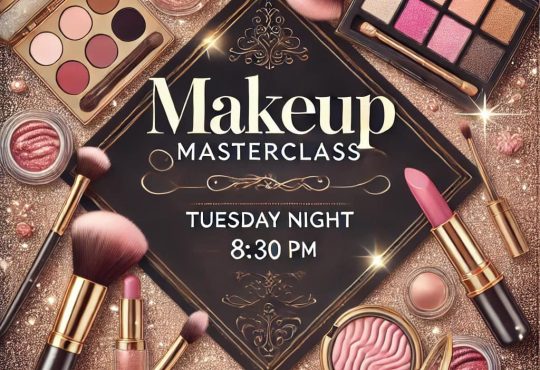Running Your Own Business as a Mary Kay Rep
An October 2005 article from Smart Money for someone considering joining Mary Kay.
QUESTION: A Mary Kay representative told me that if I became a rep, I could deduct the cost of my skin-care and cosmetics products from my taxes because I’d be running my own business. She assured me that Mary Kay isn’t a pyramid scheme. Is this true?
— Anonymous
ANSWER: You’re smart to consider such offers carefully before diving in. Yes, people can make money through multilevel marketing companies like Mary Kay Cosmetics. But it’s important to understand the business model before loading up on those lipsticks and lotions.
Mary Kay Cosmetics, established in 1963, presents itself as an opportunity for women — many of them stay-at-home wives — to earn income. Today it’s the second-largest direct seller of beauty products in the United States, surpassed only by Avon Products (AVP).
Mary Kay sales reps, called “independent beauty consultants,” sell door-to-door, at parties, and directly to friends and family. Mary Kay products aren’t available in retail stores or on the company’s web site.
Consultants buy their inventory from Mary Kay, and sell the products at roughly twice the price. Mary Kay will buy back unsold inventory for 90% of what the consultant paid for it. But shipping fees and sales tax aren’t refunded.
There’s another way to earn income from Mary Kay: by recruiting new consultants. Recruiters earn a percentage of each inventory purchase made by the consultants they have recruited. And when recruits start assembling teams of their own, the first recruiter makes a commission on the inventories purchased by the recruits’ recruits, and so on.
Sounds like a pyramid scheme, you say? According to the Federal Trade Commission, a pyramid scheme is a multilevel marketing plan in which the main way of earning money is by recruiting new distributors of a product. The best way to tell if a multilevel marketing company is a pyramid scheme is to find out how most of its sales reps make money — by selling the product to end customers or by bringing in fresh recruits, says Robert FitzPatrick, president of Pyramid Scheme Alert, a consumer organization, and author of “False Profits.” (For more on this, read this FTC article.)
FitzPatrick has studied plenty of multilevel-marketing business models, including that of Mary Kay. “I wish I had a good black and white answer for Mary Kay,” he says. “What we find is that elements of Mary Kay are operating like a pyramid scheme and elements are operating like a direct sales company, a legitimate business.”
The majority of Mary Kay products are eventually sold to customers, FitzPatrick says. But during the past few years, there’s been a noticeable shift in focus from selling to recruiting.
Are you a small-business owner with advice for this reader? Email us your recommendations, and we might post them.
Rachel Suddeth, a 39-year-old computer programmer from Naperville, Ill., who was a consultant with Mary Kay for about a year starting in late 2001, agrees with FitzPatrick’s assessment. “When you go into meetings, they basically tell you, if you really want to make money you have to bring other people in and you get them to make inventory orders,” she says. “I would [estimate that] training on the products and how to sell them was maybe 10% of the training they gave you; most of the effort was spent on telling you how to recruit.”
Mary Kay sent us the following statement from Tom Whatley, president of sales and marketing: “Selling our product is first and foremost at Mary Kay — it’s the cornerstone of our business and has been for 42 years. Mary Kay Ash always said, ‘Nothing happens until somebody sells something,’ and that’s still a great way to describe our business.”
In 2004, the company sold $1.8 billion worth of inventory to consultants, up slightly from 2003. The company doesn’t track subsequent sales to customers.
Suddeth followed the recommendation of her sales director and bought an initial inventory package worth $3,600. She says she had trouble moving the merchandise. Throughout her year as a rep she made more purchases, ultimately quitting with an estimated $10,000 loss.
That’s not to say a person can’t be successful with Mary Kay. Suddeth suggests that new consultants begin with an inventory order of just $100 and avoid making orders until they can drum up demand for the product. “Take orders first and get the sales, and then buy the products,” says Suddeth.
Finally, a word about taxes. Small-business owners are indeed allowed to deduct certain business expenses from their income. But according to Martin Nissenbaum, director of personal finance and taxes at the accountancy Ernst & Young in New York, no makeup that’s suitable for street wear is deductible — even if bought specifically for business purposes. In other words, someone who wears Mary Kay makeup in her personal time can’t deduct those costs as business expenses. (For more, read IRS Publication 911, “Direct Sellers.”)
The good news for Suddeth and her fellow Mary Kay discontents: Nonrefunded inventory costs can be deducted, says Nissenbaum.





 Visit the
Visit the
My aunt has a group of friends and my aunt said a certain friend tries to sell mary kay to…
What breaks my heart is I bet Eileen would be so inspirational and productivity generating as a manager in any…
Cut out pictures and make a goal book! No thanks. The last time I cut out pictures for anything was…
She would never look because she doesn't subject herself to negativity!
They're absolutely being warned! My office has an Arbonne hun and a Bravenly hun, the mail clerk warned me within…